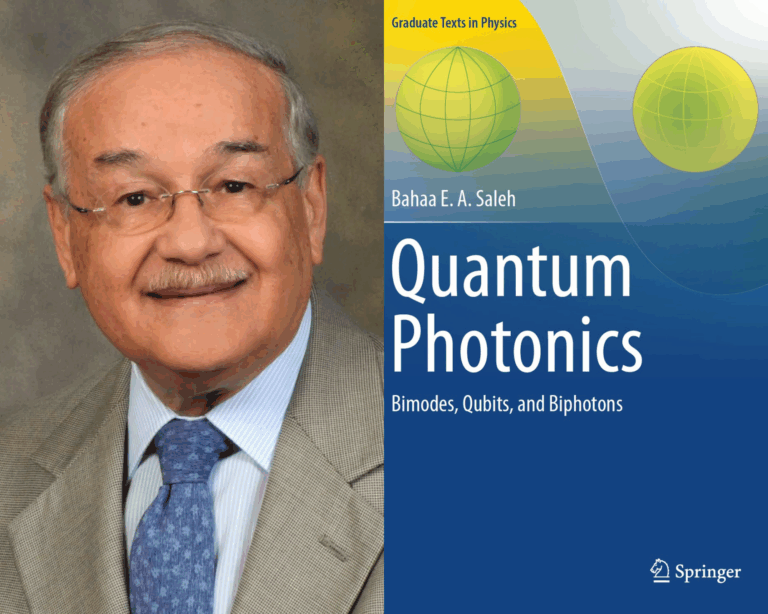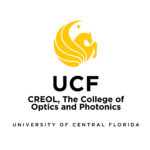CREOL Emeritus Dean Publishes Book on Quantum Photonics

As optics and photonics programs evolve to meet the demands of the future, quantum mechanics – and its applications – are more integrated into the field than ever before.
That’s one of the many reasons University Distinguished Professor Emeritus and former CREOL Dean Bahaa Saleh says he published his new book, Quantum Photonics: Bimodes, Qubits, and Biphotons. The book explains the foundational elements of photonic quantum information, and encourages “the increased use of the theory of linear vector spaces as the mathematical foundation” for classical optics, quantum physics, and quantum information science.
Saleh served as Dean of CREOL from January 2009 to December 2019. This is his fourth published book, following a research career that has spanned more than 50 years. He explains the importance of his new text – and what’s next in the discipline of quantum photonics:
Q1: During your career, you’ve published several books on photonics and imaging. What inspired you to author this new work on quantum photonics?
A: Early in my career, I taught several courses focused on the first quantum revolution, which began in the early 20th century and introduced the foundational principles of quantum mechanics—principles that led to transformative technologies such as transistors and lasers. The second quantum revolution, emerging in recent decades, leverages the more subtle and nonclassical features of quantum mechanics—particularly superposition, entanglement, and measurement—to manipulate information in fundamentally new ways. This development has fueled the rise of quantum information science, which underpins revolutionary technologies like quantum computing, secure communication, and precision sensing—and has led the United Nations to designate 2025 as the International Year of Quantum Science and Technology.
Optics and photonics play a central role in these quantum technologies. Photons, as carriers of quantum information, offer unique advantages such as high-speed transmission, low energy loss, minimal decoherence, and the ability to operate at room temperature, making them ideal for practical quantum systems. Recognizing the growing importance of photonics in quantum science and engineering, I felt compelled to write a new book introducing the fundamentals of quantum photonics and exploring how photons enable a wide range of quantum applications.
Q2: How do you hope this new text is used in the classroom?
A: While quantum theory has long been a cornerstone of the core physics curriculum, it has been less emphasized in engineering and optics programs. This book is designed for a broad audience: physics students with limited background in optics and photonics, and engineering or optics students with limited exposure to quantum principles. It adopts a unified approach based on linear vector space mathematics—a framework familiar to both groups—to introduce the essential concepts of quantum photonics. Students will learn about coupled optical modes that carry photons and how photons can function as quantum bits (qubits).
With this foundation, they will be well prepared to explore contemporary applications such as quantum computing, secure communication, and quantum sensing and imaging. Rich with illustrations, examples, and exercises, the book is well suited for both classroom teaching and self-study.
Q3: You’ve witnessed the field of quantum photonics evolve over the years. What’s exciting about the field’s future?
A: What’s most exciting about the future of quantum photonics is its potential to enable a new generation of transformative technologies. Despite challenges such as weak photon-photon interactions and the technical difficulties of scaling, I expect advances in nanophotonic systems and integrated platforms to address these limitations. We are already seeing significant progress toward scalable quantum networks, photonic quantum processors, and ultra-sensitive sensors with applications ranging from medical diagnostics to national security.
As research continues to advance and quantum technologies become more accessible, quantum photonics will increasingly serve as a bridge between fundamental science and real-world innovation—reshaping how we process, transmit, and protect quantum information.
Saleh’s new book, Quantum Photonics: Bimodes, Qubits, and Biphotons is available from Springer Nature here.
